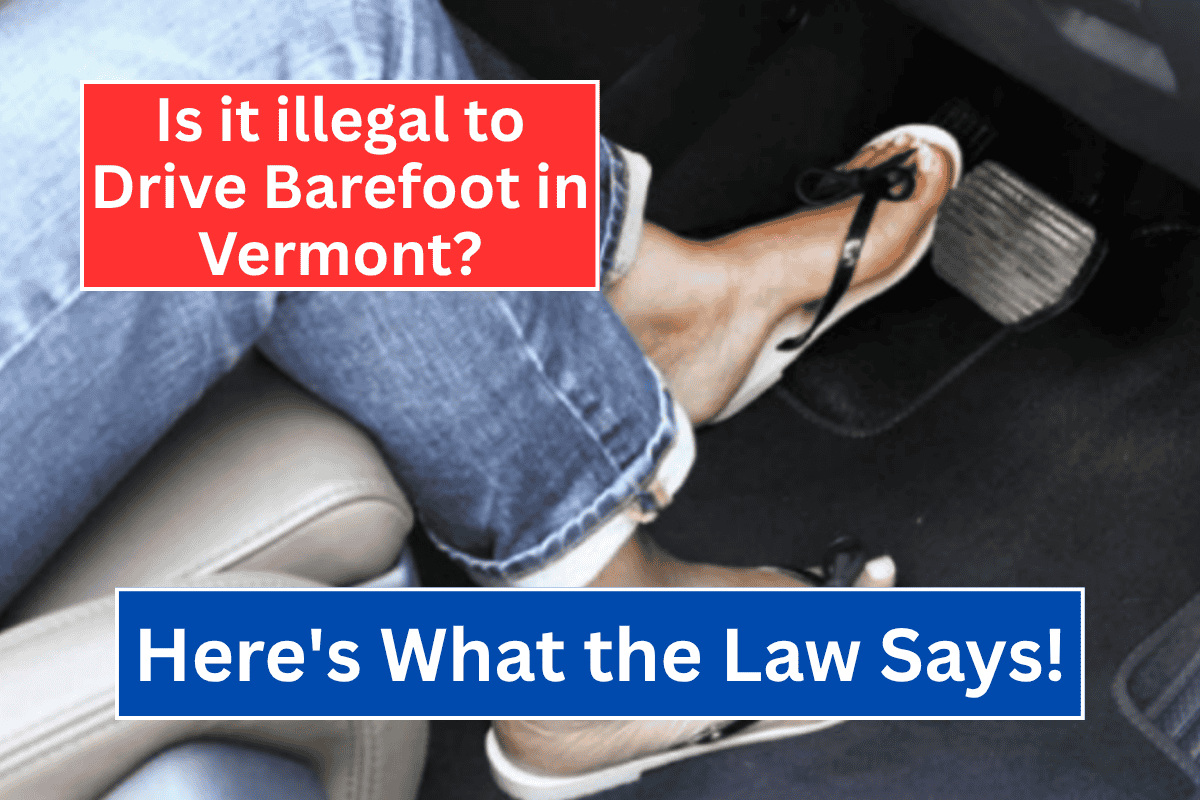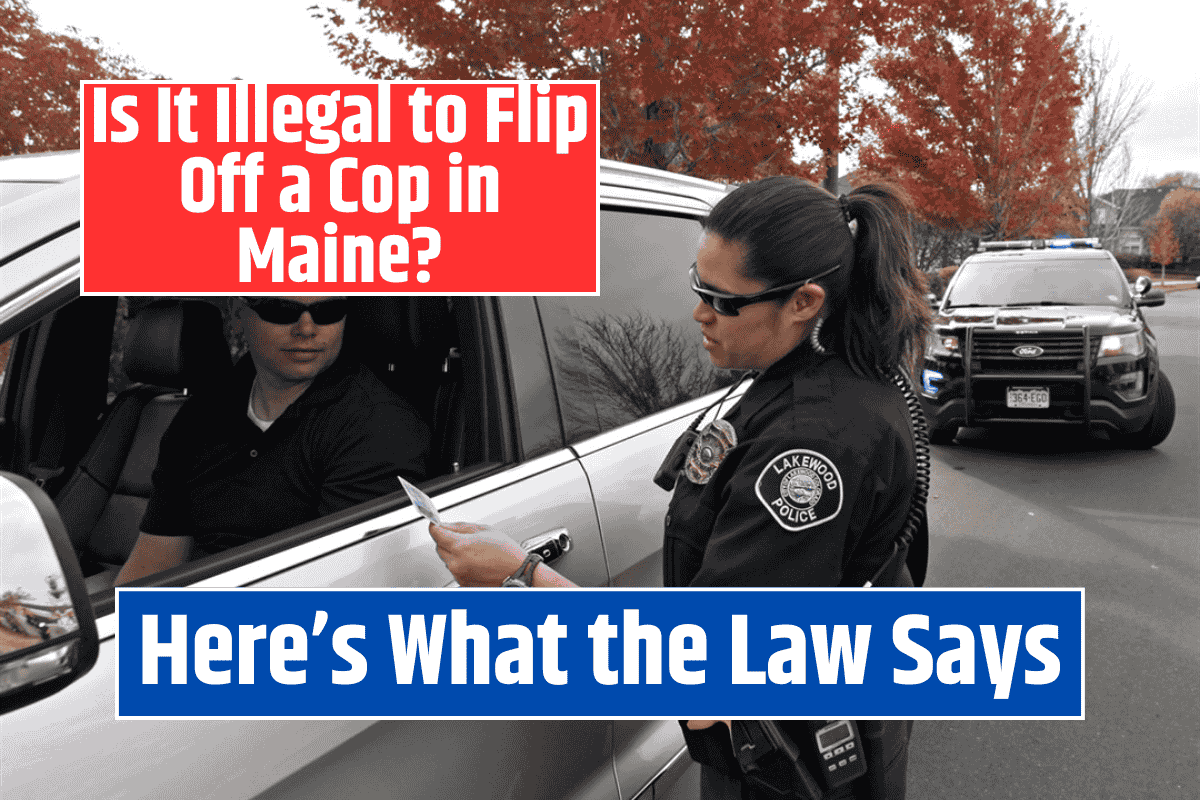Driving barefoot is a practice that many drivers occasionally consider, especially during warm weather when shoes can feel restrictive. But is it legal? In Vermont, like in most U.S. states, driving barefoot is legal.
There is no specific law that prohibits operating a vehicle without shoes in the state. However, while it’s technically allowed, driving barefoot comes with some risks and considerations that every driver should be aware of.
Understanding Driving Laws: Can You Drive Barefoot Legally?
It might come as a surprise, but driving barefoot is legal in all 50 states, including Vermont. There are no state laws specifically forbidding the practice, which is a common misconception. You can drive without shoes as long as you are able to maintain control of the vehicle and drive safely.
Why the Confusion About Barefoot Driving?
Although it’s legal, driving barefoot isn’t always the safest choice. Driving without shoes can:
Reduce grip on the pedals: Bare feet often don’t have the same traction as shoes, which can make it easier for your feet to slip off the pedals, especially in wet conditions.
Increase risk of slippage: In an emergency, you might not be able to press the brake or gas pedal as firmly or accurately as you could with shoes, which could lead to dangerous situations.
Cause foot pain: Over time, driving barefoot, especially on long trips, can lead to foot discomfort and cramping, limiting your ability to control the vehicle properly.
While no law forbids it, these safety issues are worth considering before deciding to drive barefoot.
Safety Concerns: Are There Risks to Driving Barefoot?
Though you may feel comfortable driving barefoot, there are several safety concerns:
Slippery Pedals: Bare feet are more likely to slip off the pedals, especially if you’re wearing sandals or if your feet get sweaty.
Reduced Control: Shoes help provide more accurate control when pressing the brake, gas, or clutch. Without shoes, you may find it difficult to maintain precise pressure, especially during quick stops or sharp turns.
Foot Protection: In the event of an emergency where you need to exit the vehicle quickly, not wearing shoes can expose your feet to dangers like rough terrain or sharp objects on the ground.
Barefoot Driving vs. Footwear: Why Shoes Matter
For optimal control, wearing proper footwear while driving is crucial. Shoes with good grip, like sneakers or low-heeled shoes, provide better traction and allow for more precise pedal control. In contrast, driving barefoot may reduce the effectiveness of your response time, increasing the risk of accidents.
What About Driving with Flip-Flops or High Heels?
While not illegal, wearing flip-flops or high heels while driving can be just as dangerous as driving barefoot. Flip-flops can slip off easily, while high heels may prevent you from pressing the pedals smoothly. The best choice is to wear secure, driving-friendly footwear that offers both comfort and control.
Legal Implications of Driving Barefoot
While there is no law explicitly banning driving barefoot, insurance companies may scrutinize your case if you’re involved in an accident while driving barefoot. Since driving without shoes can lead to a loss of control, an insurance company or a jury might find you partially responsible for the accident. This could result in reduced compensation if you were found to be negligent in your driving behavior.
In some rare cases, if you were involved in a car accident while barefoot and it was determined that your bare feet contributed to the loss of control, you might face legal consequences under the negligence laws. Vermont, like many other states, follows a modified comparative negligence rule, meaning that your compensation for damages could be reduced if you were partially at fault for the accident.
Should You Drive Barefoot in Vermont?
While it’s legal to drive barefoot in Vermont, it’s important to weigh the risks before doing so. Here are a few points to consider:
Grip and Control: Bare feet don’t offer the same control over the pedals as shoes do. If you feel uncomfortable or experience difficulty while driving barefoot, it’s a good idea to put shoes back on.
Keep Shoes Handy: If you prefer driving barefoot for comfort, it’s a smart idea to keep a pair of driving-friendly shoes in your car. If you experience discomfort or need better control of the vehicle, you can easily slip them on.
In Vermont, driving barefoot is legal, but it’s not necessarily the safest option. While it’s fine to drive barefoot, it’s essential to be aware of the safety risks involved. Slipping off the pedals, losing control, or experiencing foot pain could all lead to dangerous driving situations.
For better control, always opt for shoes that provide a secure grip on the pedals, especially for longer drives. If you choose to drive barefoot, always assess your ability to maintain control of the vehicle and make sure your feet are comfortable.












